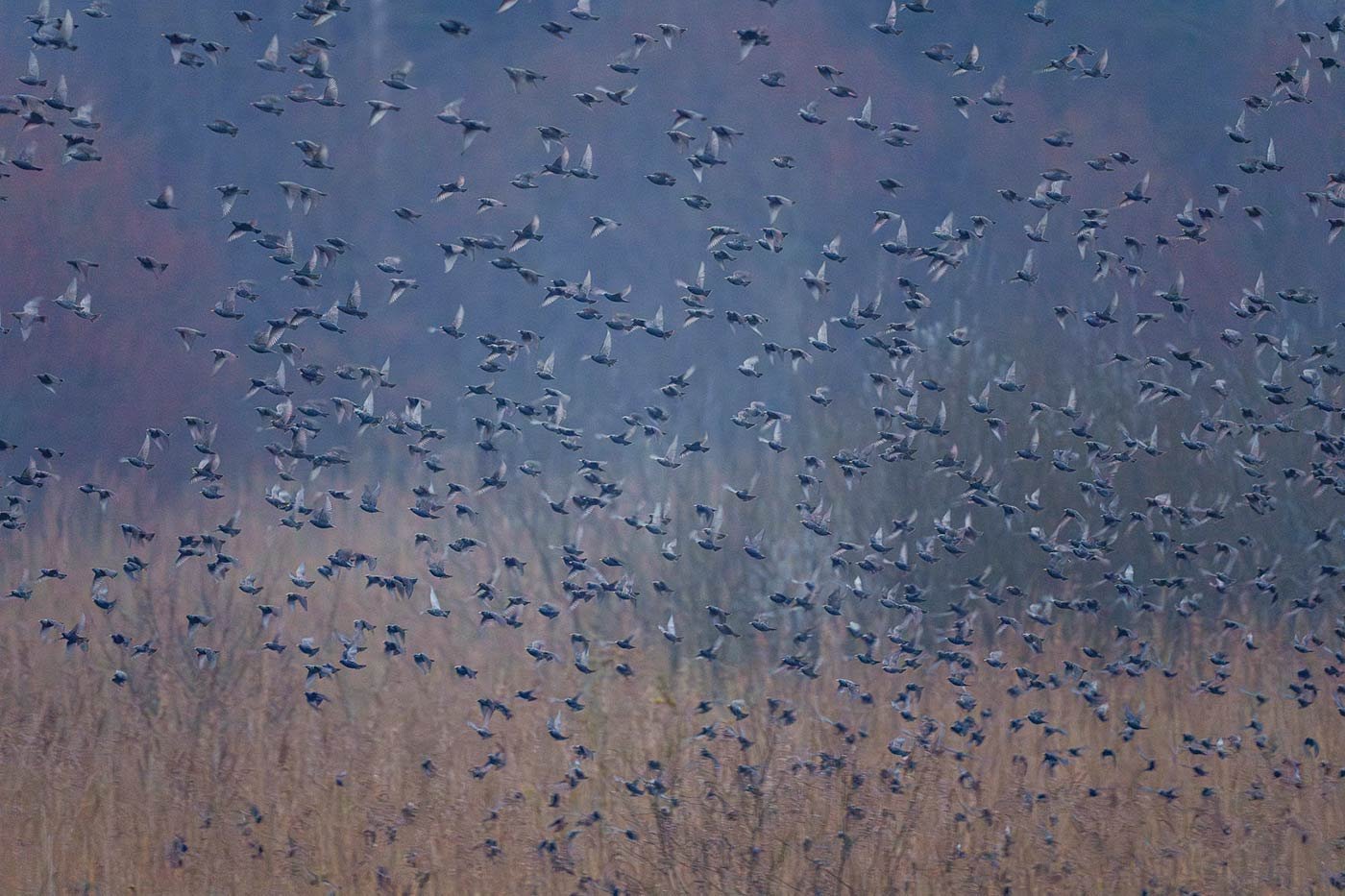The Secret — Wildlife Photography Loves Bad Weather!
Imagine you're planning a tour for a nature photo session. What do you usually do first when planning? I guess you check the weather report. You probably do this for all your outdoor activities, right? When rain, snow, or strong winds are forecast, the disappointment is often great. Depending on what you have planned, it can be really frustrating. What if I told you that you should head out with your camera just then?!
I personally find these changeable conditions quite appealing for wildlife photography. They are especially appealing when the rain or snow intermittently takes breaks. Because then, sometimes very interesting and unexpected moments happen in the wild.
Unexpected Moments in Wildlife
Just unsteady weather typically brings surprises in the wildlife. Although the light is often not ideal, it is on such days that unique situations often arise that might otherwise be missed.
And which month is better suited for this than April?
Because April does what it wants!
Capture: iPhone 13 - View from our lookout point
At the end of April, I decided to experience the wilderness in rain, snow, sub-zero temperatures, and strong winds with a photo friend, @bergsteiger_1911,. We chose a location in a nature reserve with a covered lookout point so we weren't completely exposed to the cold, wet elements. Even with the right clothing for rain, snow, cold, and wind, you feel it in your bones after several hours in the damp cold - maybe it's the age, or just that no adventure comes without a bit of discomfort. 😋
Morning Challenges and Unexpected Encounters
My buddy and I met at 5 AM and endured until 1 PM at our chosen location. My main goal was to get ospreys on camera. These birds like to rest here on their journey north, especially in bad weather they linger to gain strength. Two years ago, I was able to photograph eleven different ospreys at this spot within four weeks.
The day began with minor mishaps: Halfway to the meeting point, I realized I had forgotten my thermos of hot tea at home. Luckily, I could buy some water and a cup of coffee at a gas station — not ideal, but better than nothing. As I approached the agreed meeting point, the outside temperature dropped. It was 8 °C in Nuremberg, but only 2 °C at the destination. A hot drink would have been a better choice throughout the day than a cold bottle of water.
After we arrived at the meeting point, my buddy and I trudged through the darkness and heavy rain to our covered lookout. However, I had to realize that I had lost one of my camouflage nets. So I walked back towards the parking lot, about a kilometer long, and searched the ground with a flashlight. Just before our starting point, I found it: The rain-soaked net lay on the ground. These camouflage nets are crucial for remaining inconspicuous during the animals' active phases, a reason why we were already there before sunrise.
Unique Nature Moments
After the initial minor mishaps, the rest of the day was filled with fascinating observations. It's incredible to experience the awakening of nature when you're already in place an hour before sunrise. The initial silence gradually broke, filled with the lively calls of the birds, a truly magical moment. We were in an area with water surfaces and reed belts, which served as an overnight spot for starlings. The rain delayed the starlings a bit longer from starting their day, giving us better lighting conditions for our observations.
Sony A1 + 400 mm f2.8
As the rain gradually turned into thick snowflakes, a transformation of the landscape into a wintry white unfolded before our eyes. Waterfowl soon wore a blanket of snow on their backs, while the landscape shone in fresh green and white.
Observations and New Photo Goals
But it didn't stop there: Besides numerous further observations, like a pair of muskrats swiftly swimming from one shore to the other, we also experienced other exciting moments. An otter repeatedly sleekly dove into the water to hunt, surfaced for air, and then disappeared again. A male marsh harrier brought its mate food and handed it over ceremoniously. Particularly dramatic was the swan, which chased geese out of its territory for the entire seven hours without paying attention to itself. Once, it completely misjudged the situation as it chased a Canada goose in low flight. Both birds steered directly towards us, the goose just managed to fly over us in time — you could hear its wings cutting through the air. The swan could not perform such a maneuver and had to initiate a risky evasive action. It passed maybe 20 cm to the left of our shelter, touched a young beech with its right wing, fortunately still elastic, and rushed over the bushes with its belly before it could crash land. After this action, the swan visibly returned on foot to the lake and its nest.
We observed much more, but the barn swallows (Hirundo rustica) particularly stood out. They flew relatively slowly, unlike in dry weather. The rain and snow made them act slower. This naturally inspired us to take advantage of the situation and capture these swift fliers on camera. However, it was not easier just because the barn swallows were flying slower; they were still fast, and the camera focus had to cope with the snow and rain. But the swallows were now our new wildlife photography target. Who needs ospreys, then?😋
Barn Swallow (Hirundo rustica) – Photographic Challenges
Barn Swallow (Hirundo rustica) Sony A1 + TC1.4 + 400 mm f2.8 - 1/2500 + f5 + ISO 3200 + 560 mm
The autofocus of my cameras was put to a hard test – little light and poor visibility due to thick snowflakes or rain made it difficult to capture a small, fast-moving target over the water. I had two cameras with me, as I like to experiment and test the limits of technology.
I used two cameras with significantly different performances, both considered hybrids: The Sony A1 and the Sony a6700. The A1 I equipped with a 400 mm f2.8 GM lens and a 1.4x teleconverter, resulting in an effective focal length of 560 mm, ideal for detailed shots from a greater distance. The a6700 I combined with a Sony 200 mm - 600 mm f5.6 / 6.3 G lens. Due to the APS-C crop factor of 1.5, this combination achieves a field of view of 900 mm.
Shots with Sony a6700 and the Sony 200 - 600 mm f5.6/6.3
Shots with Sony A1 and the Sony 400 mm f2.8 + TC 1.4
Challenges in Photographing Swallows
Dark, wet feathers: The dark and wet feathers of the swallows absorb a lot of light and reduce reflections, making it difficult for the autofocus to accurately capture the birds
The autofocus challenges under extreme conditions: Rain and snow obstruct visibility and the swift movements of the swallows demand fast and precise reactions from the autofocus. With the Sony a6700, the autofocus often focused on the precipitation, while the Sony A1 was less often affected by it.
Small viewfinder: The small viewfinder of the Sony a6700 with low resolution makes it difficult to track the fast bird in poor lighting conditions.
Full frame vs. APS-C: Photographing a close object (min. distance 5 m) is easier with the full-frame camera Sony A1 and a focal length of 560 mm, as the larger viewfinder offers more room. In comparison, it is more challenging with the APS-C camera and 900 mm field of view to keep the object in the viewfinder.
Blackout-free shooting: With the Sony A1, blackout-free triggering during continuous shooting allows you to keep flying birds continuously in view, which unfortunately is not the case with the Sony a6700.
Bird recognition mode: Both cameras have a bird recognition mode that works excellently under better lighting conditions. In such bad weather, both cameras reached their limits, with the a6700 being more affected.
Weight of the equipment: Handling the two cameras and lenses without a tripod becomes very taxing on the arms after a short time. Even though the combination of the Sony a6700 with the Sony 200 – 600 mm f5.6 / 6.3 G lens is lighter than the Sony A1, TC 1.4, battery grip, and Sony 400 mm f2.8 GM, the arm becomes just as heavy after a while.
Barn Swallow - Sony A1 + TC 1.4 + 400 mm f2.8 - 1/2500 + f5 + ISO 5000 + 560 mm
Weight of the equipment:
Sony A1 = 740 g
Sony Battery Grip = 290 g
Teleconverter = 167 g
400 mm f2.8 GM = 2895 g
Total = 4092 g
Sony a6700 = 493 g
Sony 200 - 600 mm f5.6 / 6.3 G = 2115 g
Total = 2608 g
Despite these challenges, I still managed to capture some, good shots.
In conclusion, a photo is always as valuable to me as the experience I associate with it. Each of my pictures has a story that goes far beyond what is visible. Leaving the comfort zone and taking advantage of seemingly unfavorable weather conditions often open up entirely new perspectives. The experiences and the images captured under these circumstances can fundamentally differ from the usual sunny shots.
Until next time, I wish you good light and stay curious!























